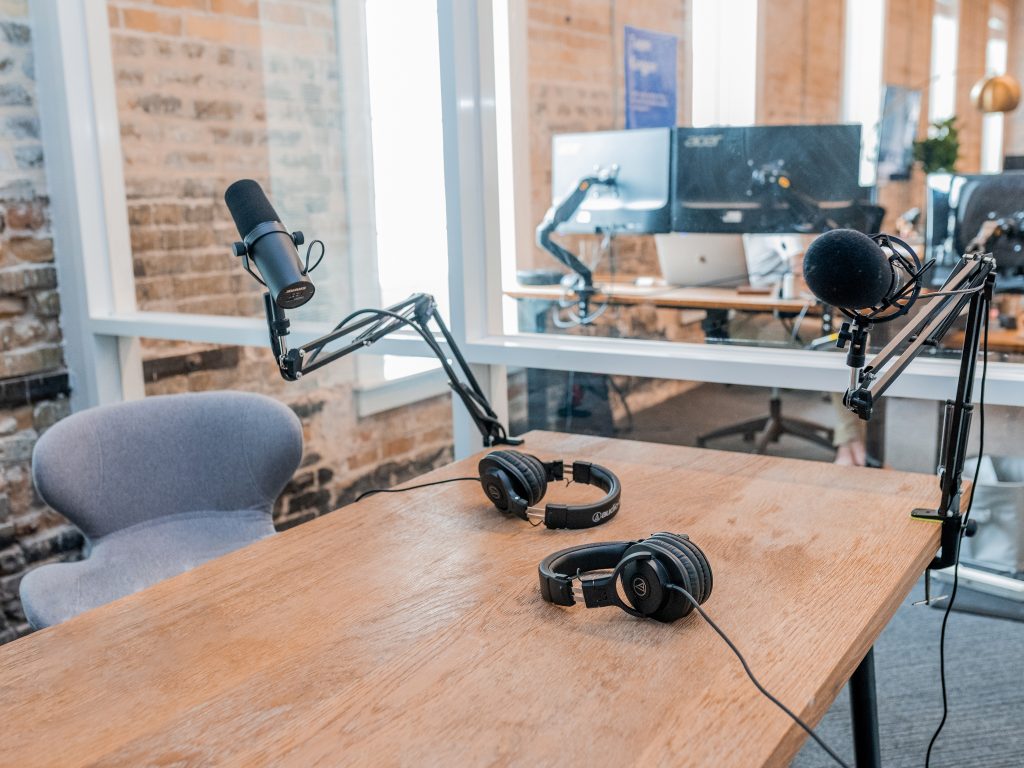
In fall of 2005, Scott Schuman logged onto the trad menswear forum Ask Andy About Clothes under his screenname SchumanNYC. He posted a new thread under the title “The Next Great Men’s Magazine Will be a Website.” The thread, as the title states, is about how the internet would eventually displace traditional menswear publications.
“Unfortunately the classic styles most of us covet change very little season-to-season, making it tough to keep a magazine fresh and growing,” he wrote. “Someday, an enterprising young soul will see the internet’s ability to cater to a very small, specific group of people and create a website for the sartorially inclined. The real advantage is the ability to archive articles. Most of what we like in menswear can be read now or a year from now, and still be relevant. The photo spread on Barbourish tweeds in Men’s Vogue is a perfect example. Visually, websites are as interesting, if not more exciting, as print magazines. Let’s not even get into the cost savings of printing charges alone.”
No one replied to Schuman’s post. Today, it sits alone in Ask Andy’s archive. But Schuman’s prediction proved to be prescient. The same month he posted that thread, he started The Sartorialist, which would become one of the most commercially successful, independent fashion websites ever. The Sartorialist would also go on to inspire hundreds, if not thousands, of menswear blogs and writers (including myself).
Since then, online media has indeed eaten into traditional print’s market share. The internet allows people to home-in on very niche interests, as well as advertisers to target people more closely than ever before. As a result, it’s no longer enough for a magazine to say it’s “for men,” a format set by Esquire’s Arnold Gingrich. Whereas people used to turn to Esquire for direction on how to dress for work and weekends, clean grills and mix drinks, that information nowadays is better found online through Google or niche communities. Ten years after Schuman’s post was published, Esquire saw its single-copy sales slide by nearly 15%. Condé Nast, similarly, has cut their GQ publishing schedule back from twelve issues per year to ten. Details has shuttered.
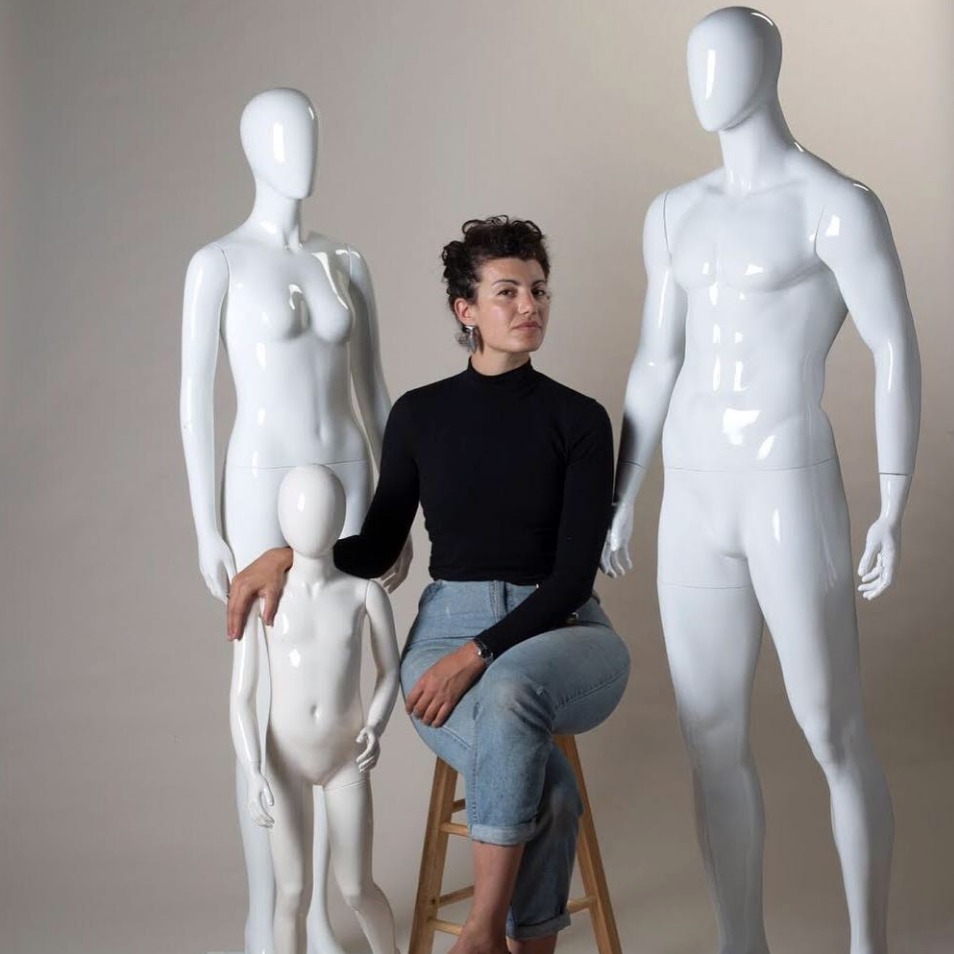
Avery Trufleman of Articles of Interest
In more recent years, however, the menswear blog landscape has also gone through a seismic change. Plenty of blogs now sit dormant or have folded completely. Some writers now work for brands. Whereas there used to be hundreds of blogs on Americana and prep alone, now there are just a handful of major players. Like sequential waves of gentrification, the displacers have since been displaced. People today spend more time on Instagram and Twitter, which leaves them with less time to read long-form blogs.
There has also been an explosion in menswear podcasts, which is quickly becoming the new online content frontier. A couple of weeks ago, The New York Times published an article on whether we’ve hit peak podcast. “It’s no wonder that the phrase ‘everyone has a podcast’ has become a Twitter punch line,” writes Jennifer Miller. “Like the blogs of yore, podcasts — with their combination of sleek high tech and cozy, retro low — are today’s de rigueur medium, seemingly adopted by every entrepreneur, freelancer, self-proclaimed marketing guru, and even corporation. […] And yet the frequency with which podcasts start (and then end, or ‘podfade,’ as it’s coming to be known in the trade) has produced a degree of cultural exhaustion. We’re not necessarily sick of listening to interesting programs; but we’re definitely tired of hearing from every friend, relative and co-worker who thinks they’re just an iPhone recording away from creating the next ‘Serial.'”
If the history of blogs is any indication, there will be a podcast shakeout in the not-too-distant future. The ones that will survive will be the ones that produce better-than-average content, as well as find a way to transition a hobby into a profitable business. The good news is that there are a lot of good menswear podcasts right now.
Avery Trufleman’s Articles of Interest, for example, sounds more like a professionally produced radio program than what the term podcast might imply. (A PTO exclusive: Articles of Interest is coming back for a second season next year). Trufleman took a year off from her regular job as a producer at 99% Invisible to dig into historical archives and interview more than forty people for her six-part mini-series on clothing. She even flew to Britain just to interview Don Letts, the legendary DJ and creator of the documentary Punk: Attitude. “Clothing is such a fishing net for memory. You can touch garments and say ‘I remember when I wore this here.’ You can’t do that in a sterile space like a studio, so I wanted to travel and meet people in-person. We had enough in our budget for me to fly to the UK and Hawaii.” Those in-person interviews make Articles of Interest feel so much more personal, as Trufelman gets people to open up about their thoughts.
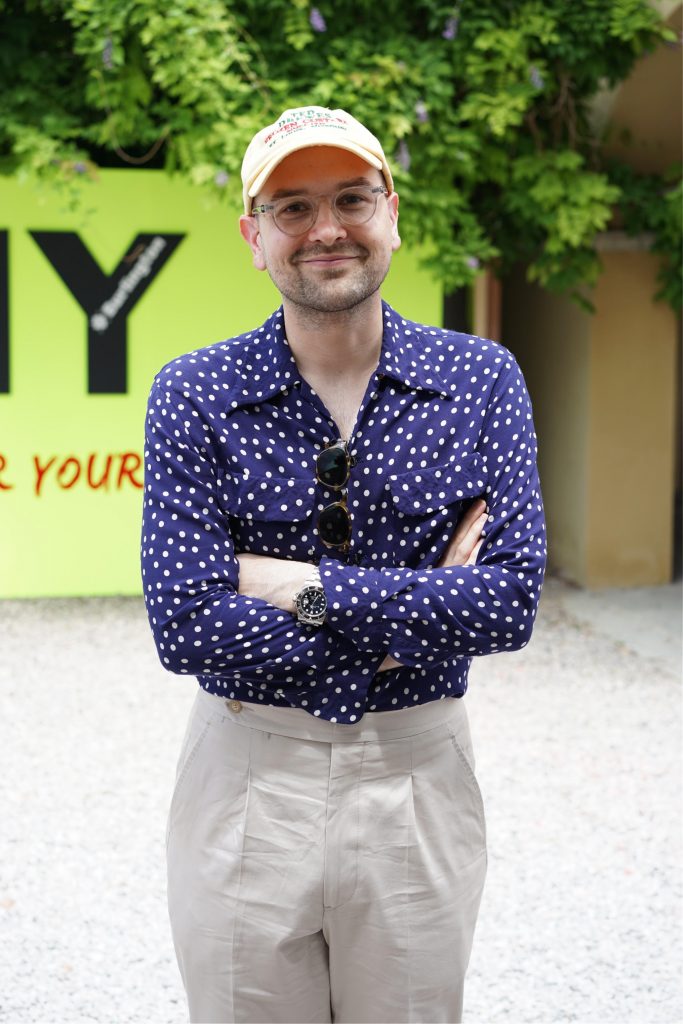
Jeremy Kirkland of Blamo!
Jeremy Kirkland, host of Blamo!, has the same approach. His show interviews the notable and dynamic personalities that shape today’s fashion world. “Early on, I did a few pods over the phone and found it challenging — not only in audio quality, but you can’t discern body language over the phone,” he says. “I didn’t know if a guest was into the discussion, or just twiddling their thumbs. We do everything in person now, and we spend a lot of time in post ensuring we can make each it sound sonically pleasing.”
The list of previous guests reads like a who’s who of menswear — Todd Snyder, Billy Reid, Scott Schuman, Jeff Staple, Bruce Pask, Robert Geller, Jim Moore, and of course our very own Jesse Thorn. Kirkland chooses guests based mostly on who he wants to talk to, he says. And his warm, earnest personality is disarming and helps to make for more interesting interviews. “I’m not ashamed to admit that I get a little too James Lipton on folks. I try to create a safe environment in which they know they’re talking to someone grateful for what they have done or are currently doing. When you position yourself as, ‘Hey, I admire you and I think you’re inspiring, I want to learn from you!’ You get a totally different reaction from folks.”
By recording with guests in-person, Kirkland is not only able to produce a better sounding podcast but also get much more personal with his interviews. Blamo! has had some tender moments. Nick Wooster has talked about his experience getting sober. Sean Hotchkiss opened up about his struggles with the sudden loss of a family member. And Kathryn Sargent discussed what it’s like being one of the few women in an “old boys’ club.” “These are all real aspects of life, and something many people aren’t aware of when they criticize or idolize people,” says Kirkland.
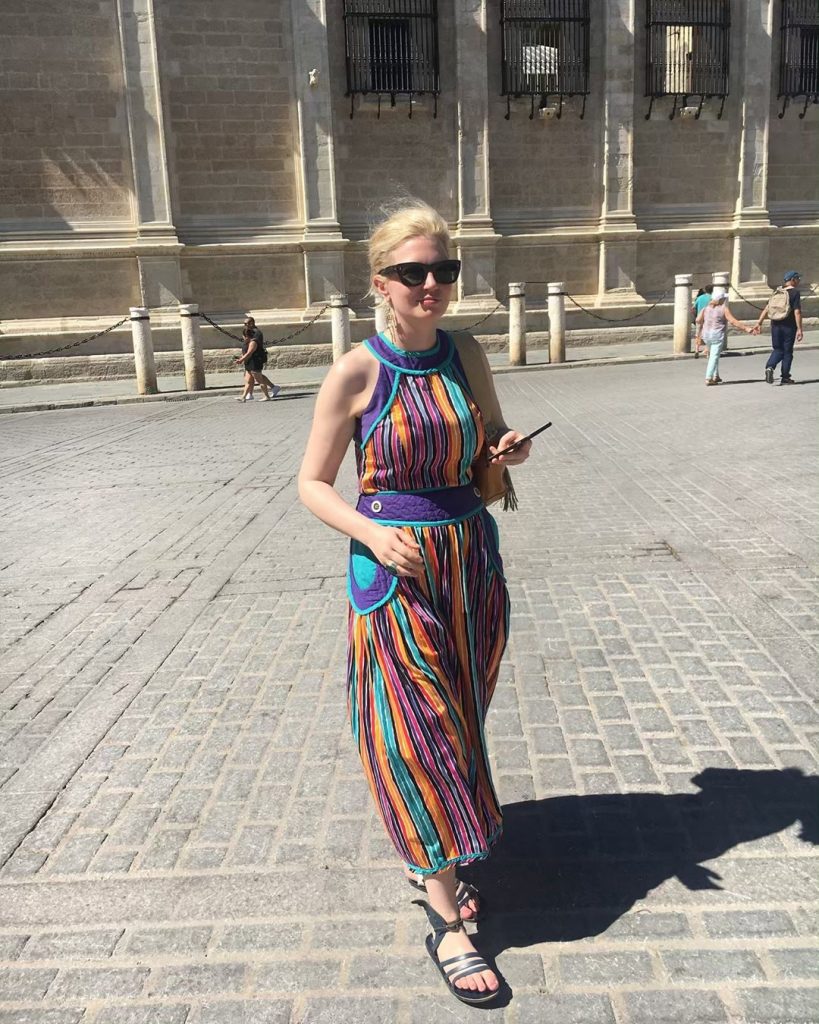
Rachel Tashjian of GQ Style’s Corporate Lunch
Articles of Interest and Blamo! are in the minority in terms of their format. Most shows are so-called “bantercasts,” where two or three people chit-chat for an hour or more. Some of these are admittedly a bit painful to listen to. With little direction or editing, they make you feel like the third wheel in your average, meandering barstool conversation. But GQ Style’s Corporate Lunch is the exception. Hosted by Noah Johnson, Rachel Tashjian, and Sam Hine, it deals with all the cool happenings in fashion and culture at large. The show is hard to pin down, but it generally feels like you’re sitting down with three friends to talk about fun topics. Most importantly, it’s funny — a rare trait in people and rarer in podcasts.
“We hang out all the time, like a cult, so our chemistry is a naturally occurring thing, like the fountain of youth,” jokes Tashjian, who also works as one of GQ’s style writers. “For the podcast, we meet for a bit each week to put our heads together, find a theme or primary topic of discussion, and Sam circulates reading material or references so we can dig into it.” And while fashion is a visual medium, GQ Senior Editor Johnson says he finds there are upsides to talking about it through a podcast. “The stuff around fashion — the personalities, business, and culture — have become so huge that you aren’t just exploring the clothes. As writers, we live to describe the looks, anyway. Plus, we can discuss, rather than merely exploring alone.”
One of the show’s highlights is its signature closing, “Thirteen Vibes,” where the hosts run through some things they’ve been into lately. The segment is short, fast-paced, and light-hearted, but also allows you to find out about the occasional unknown gem. Noah, for example, has given some great recommendations for rare Japanese-made t-shirts and Paraboot sandals on the show. (Another PTO exclusive: we asked the three for a PTO-only Thirteen Vibes. Tashjian says she’s really into morning power walking at the moment. Johnson is into Venture trucks. And Hine is opening up to the idea of anklets).
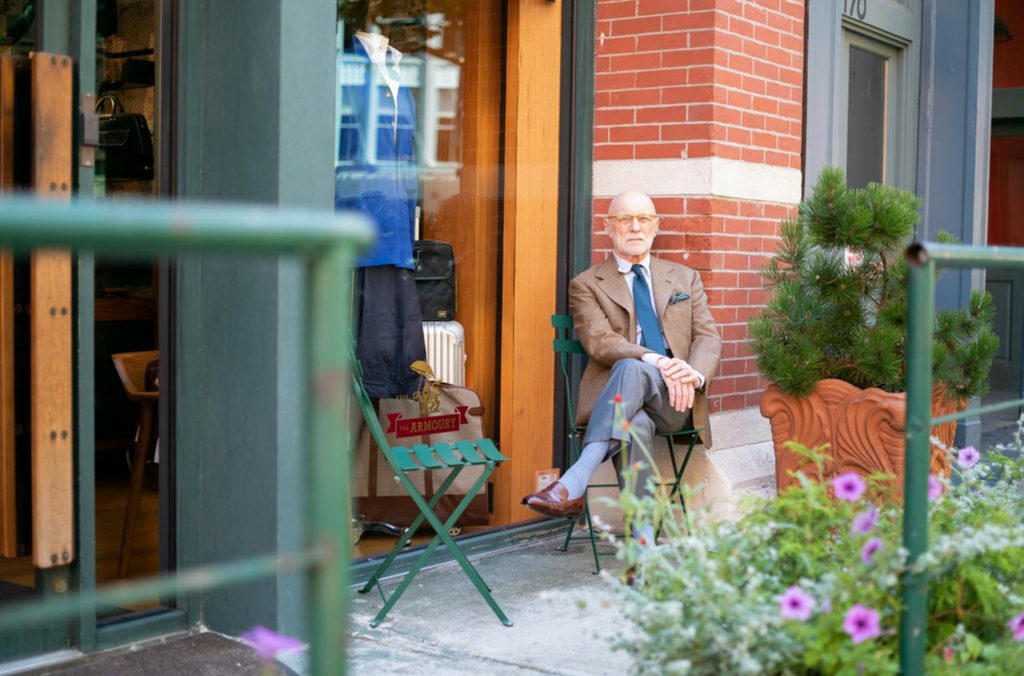
Bruce Boyer, guest on Unbuttoned
Like the word blog, podcasts suggests a kind of amateurish production. But so many shows today are more than just three friends recording themselves on a laptop. Pedro Mendes of The Hogtown Rake is doing a multi-part interview with the famous menswear writer Bruce Boyer under the podcast title Unbuttoned. “I have been making radio for close to twenty years. I worked at CBC Radio for thirteen years as a producer, sound editor, and host. I’ve worked on a variety of shows (news, current affairs, arts), some of which were podcasted. I’ve also produced and hosted documentaries for CBC, including the ‘Manthropology’ podcast, which is about modern masculinity,” he says. “My writing style and voice came from my years in radio, needing to be direct and conversational. Radio can be so intimate. It is also the most visual medium: the listener is constantly creating scenes in their minds. I love creating those scenes and taking people places with sound.”
Mendes’ six-part mini-series is skillfully edited and tied together with some narration. As a result, the show has a good pace and listeners never feel like they’re mentally drifting off. Together, Mendes and Boyer cover topics such as Savile Row, Italian Style, old Hollywood, and modern craftspeople. “Bruce and I are far apart, relatively speaking; he’s outside New York, I’m in Toronto,” says Mendes. “So I hired a freelance radio engineer to go to his house and record him while we talked on the phone. I then edited this recording, wrote my script, and spliced it all together with music. It’s rather expensive this way, but the only way to do it. I was fortunate enough during the process that my job took me to New York, and I got to meet up with Bruce there and record one of the episodes.”
As the menswear podcast space grows and evolves, more shows are becoming professionalized. That, in turn, is creating the need to balance budgets. “It may seem like podcasts are cheap; you just turn on a microphone, record, and post. But in our case, there’s the freelance engineer, transcriptions, music rights, hosting – all of that before you even consider the two to three days of work writing, editing and sound design,” says Mendes. “We were fortunate that our advertising covered the hard costs, but Bruce and I didn’t earn anything to cover our time.” At the moment, podcasts are mostly supported through ads and listener contributions, as well as selling branded merchandise. At the last Pitti Uomo, Blamo! also hosted a small event, which brought in some money.
“I feel the advantage of podcasting is that it’s a passive listening experience (e.g., done while commuting, working out, etc.). And you can listen for tone,” says Kirkland. “For most listeners, podcasts are intimate experiences because you’re right in their ear —literally. Regarding the medium of fashion, yes, it is a visual medium, but I don’t believe anyone listens to Blamo! to learn about trends or news —people listen because they want to connect with the person behind it all. I’m just happy I get to help make it happen.”
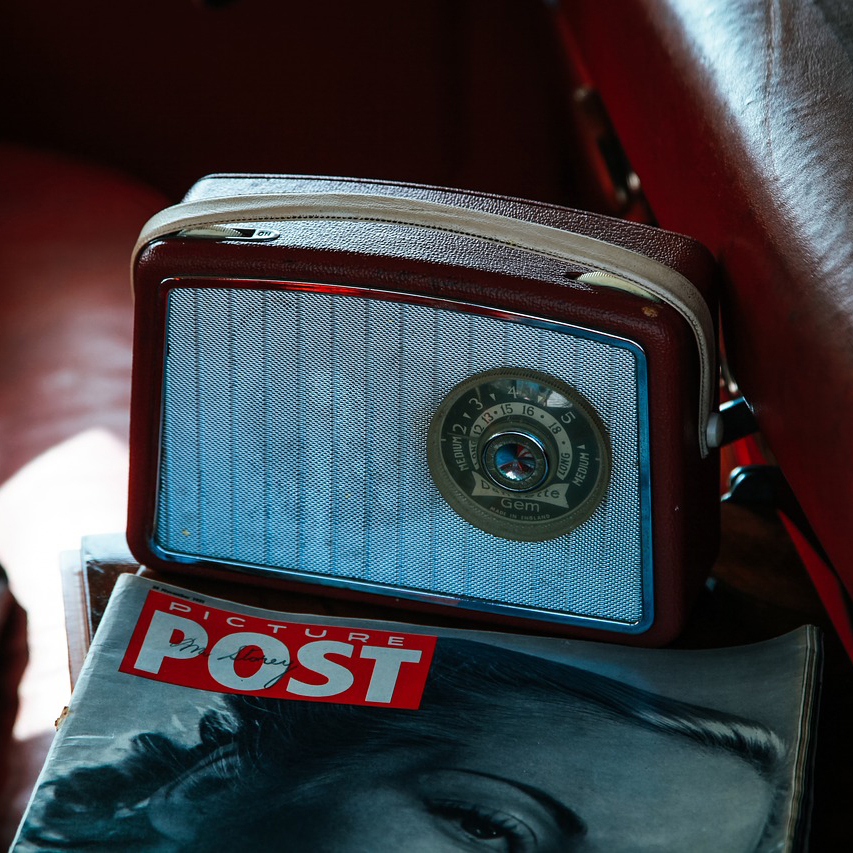
Some Menswear Podcasts to Check Out
If you’re just diving into the world of menswear podcasts, here are some recommendable shows. Of course, this is in no way a comprehensive list, but you can start with these and use iTunes or Spotify to find similar programs. We’ve also included everything from classic menswear to designer clothing to industry-related issues (although, for obvious reasons, the list leans a little PTO-y).
- Articles of Interest (coming back for a second season in spring of 2020)
- Blamo!
- GQ Style’s Corporate Lunch
- Unbuttoned (with our friend Bruce Boyer)
- Failing Upwards
- Shoegazing
- Handcut Radio
- Style & Direction
- From Tailors with Love
- Business of Fashion
- Hodinkee Radio
- Worn & Wound
- Monocle Radio
- Scandinavian Man’s The Menswear Shift
- Highsnobiety’s Conversations and Dropcast
- Hypebeast’s Business of Hype
- SHOWStudio
- American Fashion Podcast
- StyleForum (coming late summer/ early fall)







